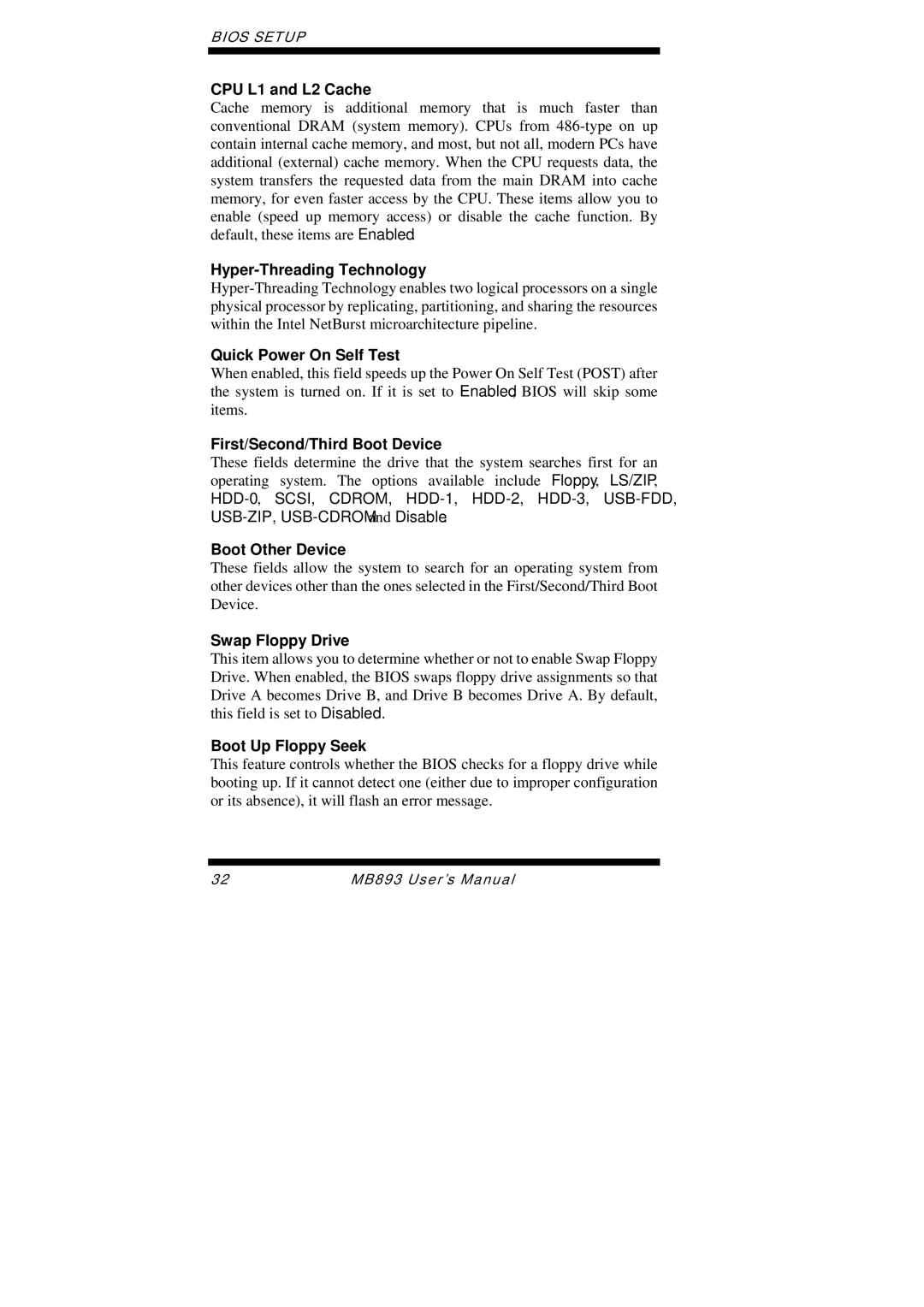
BIOS SETUP
CPU L1 and L2 Cache
Cache memory is additional memory that is much faster than conventional DRAM (system memory). CPUs from
Hyper-Threading Technology
Quick Power On Self Test
When enabled, this field speeds up the Power On Self Test (POST) after the system is turned on. If it is set to Enabled, BIOS will skip some items.
First/Second/Third Boot Device
These fields determine the drive that the system searches first for an operating system. The options available include Floppy, LS/ZIP,
Boot Other Device
These fields allow the system to search for an operating system from other devices other than the ones selected in the First/Second/Third Boot Device.
Swap Floppy Drive
This item allows you to determine whether or not to enable Swap Floppy Drive. When enabled, the BIOS swaps floppy drive assignments so that Drive A becomes Drive B, and Drive B becomes Drive A. By default, this field is set to Disabled.
Boot Up Floppy Seek
This feature controls whether the BIOS checks for a floppy drive while booting up. If it cannot detect one (either due to improper configuration or its absence), it will flash an error message.
32 | MB893 User’s Manual |
